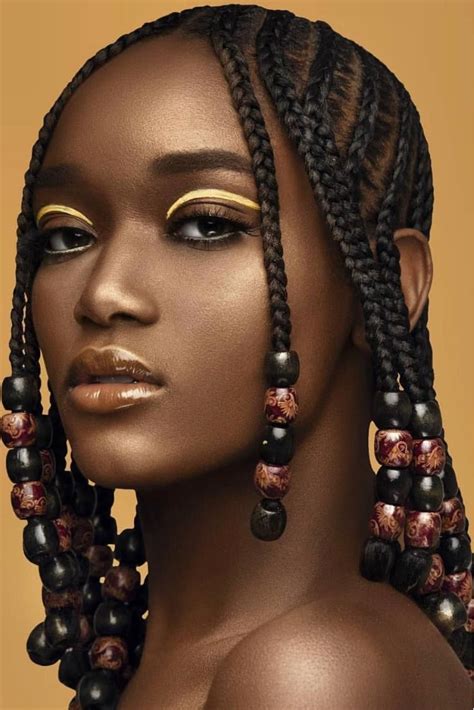Introduction

Black people have a rich and diverse history of hairstyles that have been a vital part of their culture and identity. From intricate braids to short and stylish afros, black people haircuts have evolved over the decades, reflecting societal changes, cultural influences, and individual expressions. In this article, we delve into the world of black people haircuts, exploring their history, significance, and modern-day trends.
The History of Black People Haircuts
The history of black people haircuts can be traced back to the African continent. Braidings, twists, cornrows, and other intricate styles were used as a form of personal adornment, social identification, and storytelling. During the transatlantic slave trade, these hairstyles traveled with enslaved Africans to the Americas, where they continued to be a source of cultural connection and resistance.
The Jim Crow Era and Hair Discrimination
Throughout the Jim Crow era in the United States, black people faced widespread discrimination and segregation, which extended to their hairstyles. Laws and social norms enforced ‘Eurocentric’ beauty standards, which favored straight hair and discouraged natural black hair textures. This discrimination led many black people to straighten their hair using harsh chemical treatments, resulting in damage and hair loss.
The Rise of the Natural Hair Movement
In the mid-20th century, the natural hair movement emerged as a form of cultural and political empowerment for black people. Inspired by the Civil Rights Movement, activists and stylists challenged societal norms by embracing their natural hair textures and promoting styles that celebrated black identity. This movement gained momentum in the 1960s and 1970s, with the popularization of afros, dreadlocks, and other natural hairstyles.
Modern-Day Black People Haircuts
Today, black people haircuts continue to evolve, reflecting the diversity of the black community. From classic styles like the fade and the crown braid to modern creations like the buzz cut and the bantu knot, the possibilities are endless. Black people haircuts have become a form of self-expression, allowing individuals to embrace their unique styles and cultural heritage.
The Significance of Black People Haircuts
Black people haircuts have profound cultural significance. They represent:
- Identity and Heritage: Haircuts serve as a connection to African roots and a celebration of black history and culture.
- Social Status and Identity: Different hairstyles can signify social status or membership in a particular group or community.
- Self-Expression and Creativity: Black people haircuts offer a canvas for creativity and artistic expression, allowing individuals to express their individuality and style.
Benefits of Black People Haircuts
Enhances Hair Health: Natural hairstyles, such as braids and twists, can protect hair from damage caused by chemical treatments and environmental factors.
Promotes Cultural Pride: Embracing natural hair textures fosters a sense of pride and connection to black culture.
Boosts Confidence: When black people feel confident in their hairstyles, it can improve their overall self-esteem and confidence.
Educates and Debunks Stereotypes: Black people haircuts challenge Eurocentric beauty standards and educate society about the diversity and beauty of black hair textures.
Types of Black People Haircuts
Braids:
- Box braids: Tightly woven square-shaped braids.
- Cornrows: Rows of raised and tightly braided hair.
- Dreadlocks: Natural or semi-permanent locks formed by twisting or matting hair.
Natural Styles:
- Afro: A large, rounded shape created by natural hair growth.
- Bantu Knots: Small, raised knots tied with hair.
- Twist-outs: Curls and coils created by twisting wet hair and allowing it to dry.
Fades and Tapers:
- Fade: A gradual transition from short hair at the sides and back to longer hair on top.
- Taper: A gradual transition from short hair at the sides to slightly longer hair on top.
Modern Styles:
- Buzz cut: Short, close-cropped hairstyle.
- Burst fade: A fade with a sharp line or ‘burst’ around the crown.
- Crown braid: A single braid that circles the head like a crown.
Finding the Right Black People Haircut for You
Choosing the right black people haircut involves considering factors such as:
- Face shape
- Hair texture
- Personal style
- Lifestyle
It’s recommended to consult with a professional stylist who specializes in black hair to determine the best haircut for your individual needs.
Hair Care for Black People Haircuts
Maintaining healthy hair is essential for black people haircuts. Proper hair care includes:
- Regular washing and conditioning: Use gentle shampoos and conditioners designed for black hair textures.
- Deep conditioning: Treat hair with deep conditioners or hair masks to replenish moisture and prevent dryness.
- Avoid excessive heat: Use heat styling tools sparingly and apply heat protectants when necessary.
- Moisturize regularly: Apply leave-in conditioners or hair oils to keep hair hydrated and prevent breakage.
Frequently Asked Questions (FAQs)
Q: Is it okay to straighten black hair?
A: While it’s possible to straighten black hair, it’s important to use heat protectants and avoid excessive heat styling, as this can damage hair.
Q: How often should I get my black hair cut?
A: The frequency of haircuts depends on the style and hair growth rate. Regular haircuts (every 4-6 weeks) are recommended to maintain healthy hair and shape.
Q: How can I protect my black hair from breakage?
A: Avoid excessive heat, detangle hair gently, use wide-toothed combs, and deep condition regularly.
Q: What are the most popular black people haircuts for men?
A: Fades, tapers, and afros are popular options among men.
Q: What’s the best way to choose a stylist for black hair?
A: Look for stylists who have experience cutting and styling black hair and understand the unique needs of black hair textures.
